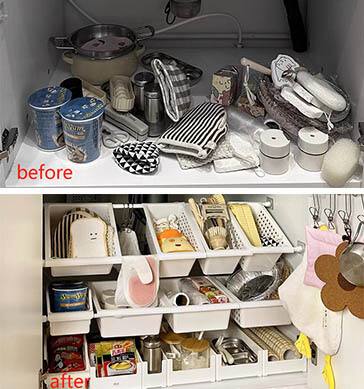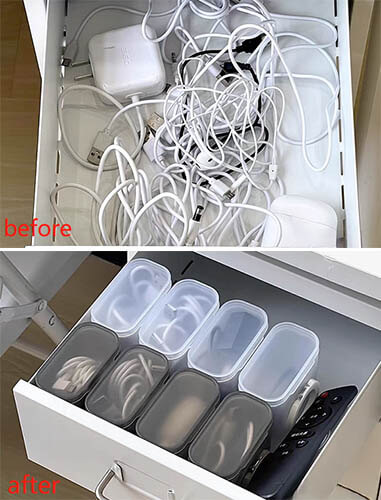Starting an e-commerce business sounds easy, but it remains a significant challenge for ordinary people. For instance, you need to find what products to sell well, where to sell them, and how to attract traffic. Despite frequently hearing numerous success stories of sellers making millions, when you actually get down to it, you’ll encounter various difficulties.
After serving many startups, we’ve summarized and shared strategies and steps on how to start an e-commerce business, particularly tailored for ordinary individuals.
Step 1 – Select a product niche
Beginners should always choose niche product markets with relatively less competition. Markets like clothing and cosmetics are indeed vast, but the competition is exceptionally fierce. Established sellers in these markets have professional operations teams, well-developed product strategies, dedicated design teams, and substantial financial backing—things that newcomers can’t compete with.
How to choose a niche product?
It’s best to select an area that you excel in or are interested in. For example, if you have a cat, you could consider selling cat clothing because you know what kind of clothing cats wear comfortable and stylish, which cat owners like to buy. Alternatively, you could sell cat toys and accessories.
If you lack passionate interests or any ideas about what to sell, don’t worry. It’s quite common; many people are in the same situation as you.
Example
For instance, I have a friend who spent two months searching for a product without any ideas. Then one day, she stumbled upon a video about a girl attending a coming-of-age ceremony, dressed beautifully and wearing some attractive accessories. Among them was a small hat that many people in the video’s comments wanted. My friend also liked it, so she searched various e-commerce platforms but couldn’t find the same one.
At that moment, niche product ideas emerged. My friend did some research and found out that this little hat is made up of 3 things: “straw hat” + “artificial flowers” + “bow”, similar to the image below. She bought all three items, assembled them herself, put them in a PP bag, and thus created a new product. She sells products related to coming-of-age ceremonies, with the target audience being girls who are about to come of age, alongside parents buying for their children and friends buying gifts for one another.
Additionally, you can also browse Amazon best sellers, and social media platforms, or use tools like AMZScout tools to assist you in brainstorming profitable items to sell online.
Step 2 – Analyze your competitors
After deciding on the niche, your next step is to investigate businesses selling the same or similar items, to stay ahead of the competition. The easiest approach to beat your potential competitors is to figure out what they do and do not do, to make their businesses excel.
A few questions that will help you in this phase are: What makes their business so unique? How do they get customers? What platforms do they use for advertisement? What is still missing from their business? Once you get these questions answered, simply improve on how they strategize their business, and make your business an improved version of their business.
Step 3 – Set up a store
The first thing is to choose a perfect name for your business, which should also be the domain name for your website. With a quick search on a business name generator, you will find the right name that will be a perfect match for your online business. Next, you’ll need to register your business name to get permits and licenses required for your business to operate legally.
There are typically 3 channel categories to set up a store, each suiting different types of people.
1. Open a store on e-commerce platforms like Amazon, eBay, etc.
It’s the simplest and preferred option for individual sellers with limited time, funds, and experience. These large e-commerce platforms have a large user base, pre-existing traffic, and a range of comprehensive tutorials, tools, and services to help newcomers quickly open a store and start selling.
2. Build an e-commerce site using tools such as Shopify and WooCommerce.
This is much more complex compared to selling on platforms like Amazon. It suits those with some funds, time, and technical knowledge. Since website building involves technical aspects like website development and design, without any technical knowledge, you may find that learning and understanding relevant tutorials will drain your energy, not to mention solving technical issues encountered in the process.
Additionally, a new website has no traffic, so you need to acquire traffic yourself. An eCommerce platform allows for greater control over branding and customer experience, but it also requires significant effort to manage inventory, marketing, and payment gateways.
3. Set up a store on social media e-commerce platforms.
Popular social media e-commerce platforms include Instagram, Facebook, TikTok, etc. Opening a store on such platforms is suitable for those with some social media experience, selling products through videos or live streams.
For example, some of our clients often share various practical and interesting kitchen items on TikTok, accumulating a certain number of fans. They choose to open a store on TikTok to sell such products. When fans or those who come across the content see these items and find them appealing at reasonable prices, they directly place orders. Similarly, I often browse videos on social media platforms and place orders when watching live streams.
Step 4 – Start product sourcing for your business
If you have a large number of products to test and they are ready-made (non-customized), you can directly use AliExpress to dropship products. This approach requires minimal initial investment and is easy to operate for startups. It’s as simple as adding items to your cart, similar to shopping on Amazon.
However, if you’re looking to customize or purchase in bulk, exceeding $1,000, be sure to contact JingSourcing. Unlike Alibaba, we can help you find suitable suppliers at competitive prices. More importantly, we will assist you throughout the entire product sourcing or customization process, ensuring product quality.
Step 5 – List your products.
Once your store is set up, you can write product descriptions, take photos, and upload product images to list products on your store. Pay attention to the user-friendliness of the mobile interface.
Regarding product images, I recommend differentiating yourself from competitors, especially with the main image.
Take one of our clients who sells storage products as an example. Not only did she purchase products from us, but she also photographed the main product image showing “messy and disorganized before using storage items vs neat and orderly after use.”
This visual presentation of the main image is more intuitive and vivid than many sellers who simply display a storage product. It directly replicates real-life scenarios, allowing customers to unconsciously resonate with the problem and thereby stimulating their desire to order.
Pictures are not our clients’.
If unfamiliar with professional image editing software, you can simply use photo editing apps on your phone. There’s no need to make the pictures look as if they’ve been professionally edited; just ensure that your product images visually outshine those of your competitors.
Step 6 – Market your products.
How you market and promote your products depends on what you have and what you can do.
If you're a newcomer with limited time and budget
Operating a store on e-commerce platforms with built-in traffic is a simple and effective option.
For instance, on Amazon, you can easily list your products after some basic store setup. Amazon’s SEO primarily focuses on optimizing product pages, such as product titles, descriptions, images, etc., to improve your product page ranks in Amazon search results. Additionally, to increase the exposure of new products, you can spend some money to buy traffic and run ads on Amazon.
Running an online store on Google is more complex, requiring tech & marketing skills.
This typically involves a team effort or individuals with sufficient funds and some SEO and marketing experience. Google SEO demands a consistent investment of time and effort in optimizing website structure, creating quality content, and more, to empower your web pages to rank higher on search engine result pages.
This is a lengthy process, and many people struggle to persevere. Like us, who are engaged in Google SEO work, we deeply understand the time and effort it requires. Besides that, you also need to run Google ads. This is different from advertising strategies within e-commerce platforms. In short, it’s not a game for ordinary individual entrepreneurs.
If you are active on social media and accumulate some experience
You can leverage this advantage to market your products on social media platforms.
Regardless of which marketing channel you choose, never assume you know best. It’s crucial to find a reference to imitate and surpass. Look for someone who has gone the extra step. Then, you just follow his lead, whether it’s a blog, a video, or a marketing strategy.
For example, if you already have 1,000 followers on TikTok and plan to promote your products through videos, then you should look for someone with several thousand followers in a similar category to study their videos, especially the hot ones. Learn from their appealing elements and incorporate them into your content. As your follower count grows from 1k to 10k, then aim to learn from those with 10k to 100k followers.
Start small, grow smart
It may sound simple, but in practice, there are many challenges. Many small businesses operate with a limited budget, so we recommend starting with small, niche products to test the market. This allows for low-cost trial and error, rather than going all-in right from the start.
When funds are tight, using a credit card or taking out a small personal loan can help alleviate short-term financial pressure. However, caution is essential. Avoid blindly stocking up on inventory or expanding your production line too quickly. Steady growth and careful planning are the keys to long-term success.








Leave A Comment